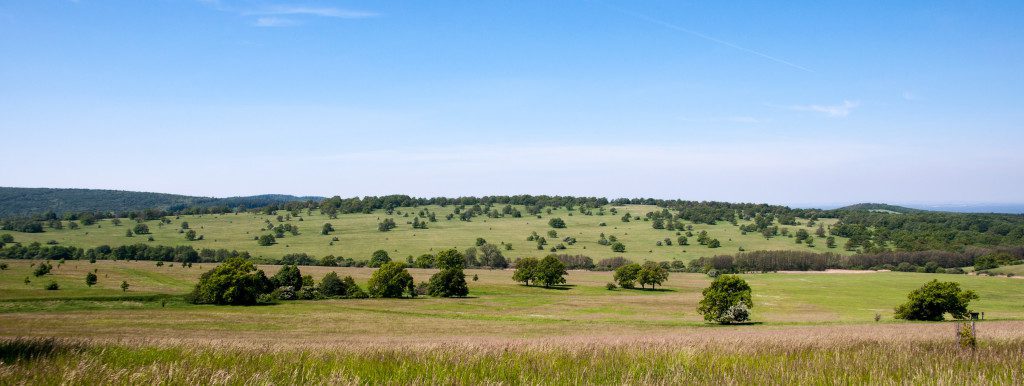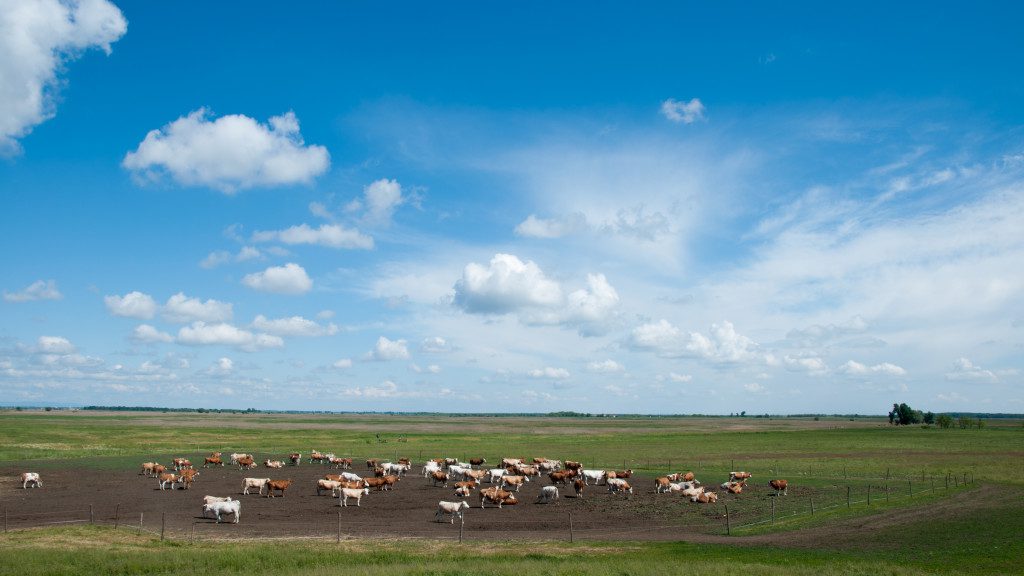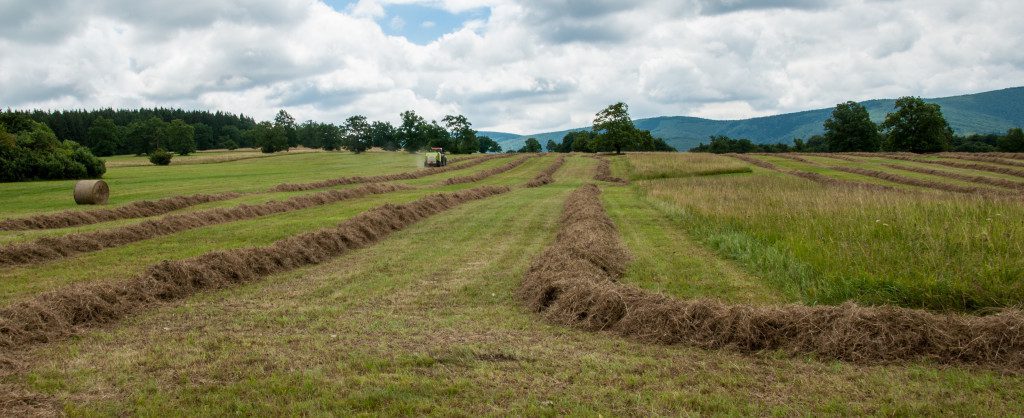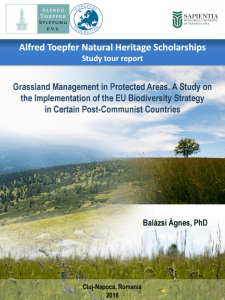Grassland Management in Protected Areas in Post-Communist Countries
Hay meadow in the White Carpathians, CZ © Balázsi Ágnes
Grassland Management in Protected Areas: A Study on the Implementation of the EU Biodiversity Strategy in Certain Post-Communist Countries
Article issued by Ágnes Balázsi
Every year, the Alfred Toepfer Natural Heritage Scholarship (ATS) supports the work of young conservationist in protected areas across Europe. Ágnes was one of the winners of the Scholarship in 2015.
The EU Biodiversity Strategy 2020 proposed to halt the biodiversity loss and the degradation of ecosystem services in order to fulfil the objectives of the Convention on Biological Diversity. However, no significant overall progress has been achieved in the EU since 2011.
The objective of the study was to gain an overview on the implementation of the EU Biodiversity Strategy, with emphasis on grassland management, in different protected areas from Hungary, Slovakia and the Czech Republic. In 2016, I had the possibility visit 2 protected areas in each country, to gather information about grassland management in protected areas. This was possible through the Natural Heritage scholarship, offered by the Alfred Toepfer Stiftung F.V.S together with the EUROPARC Federation.
The scholarship consisted in:
- (i) a visit to six protected areas’ headquarters and guided field trips on grassland areas;
- (ii) a presentation about the implementation of EU Biodiversity Strategy and data collection
- (iii) interviews/discussions on public administration structure, protected areas’ administration, management plans, monitoring of grassland habitats/species, rewarding systems and collaboration with stakeholders.
The visited protected areas were the Hortobágy National Park (HU), the Bükki National Park (HU), the Low Tatras National Park (SK), the Great Fatra National Park (SK), the Krkonoše Mountains National Park (CZ) and the White Carpathians Protected Landscape Area (CZ).

Cultural landscape in Certoryje (White Carpathians, CZ) with species-rich hay meadows and scattered trees © Balázsi Ágnes
The targeted countries face similar challenges when implementing and harmonising the agricultural and conservation policies nationally, rising from the history of political systems, changes in property rights and land use after the communism and the similar amount of time within the EU.
Different countries, similar history
The political, social, economic and environmental context of the last century has generated complex and synergistic challenges for the actual nature conservation. Livestock changes and farmlands’ reorganisation have the most significant impact on semi-natural grasslands and on traditional farming landscapes.

Cattle grazing on the Puszta, Hortobágy (HU) © Balázsi Ágnes
Whereas, the global environmental preoccupation for the designation of protected areas became a normality in the late 20th century, the top-down governance systems and centralised administrative power created (i) a gap between local communities and authorities and (ii) a formal protection of sites lacking financial support for management, personnel capacity and technical equipment. These gaps were not bridged in all of the cases.
Grassland Management – bridging the gaps
The gaps between public administration, managers of protected areas and stakeholders must be bridged within integrated multilevel governance (e.g. nature conservation and agriculture) instead of a domain-oriented approach (e.g. nature conservation or agriculture).
Effective grassland management requires successful sustainable agricultural practices, that must be developed and adopted to local conditions in order to respond to the reality’s context. In this interaction, protected area managers and nature conservation institutions, along with agriculture have a very important role. The continuous knowledge transfer from research to public administration and between institutions could be a huge advantage making the public administration respond more realistically and flexible to the social-ecological systems’ complexity.

Mosaic mowing (conservation measure) of the hay meadows in the White Carpathians Protected Landscape Area (CZ) © Balázsi Ágnes
The lessons learned from different protected areas have their own specific importance in every country. Successful conservation of nature is not always depending on circumstances but on the willingness of passionate professionals to harmonise their objectives. The active involvement of stakeholders in the governance of protected areas could lead to local initiatives which are stronger than a global political framework and offer a more practical support to achieve or maintain the favourable conservation status of the grassland habitats.
The re-connection of farmers/landowners with their cultural and natural heritage by raising their awareness of the global value of those social-ecological systems could lead to a complex approach and multilevel solutions.
Further comparative case studies might lead to a deeper understanding upon the complexity of the current situation of countries in transition, focusing on the history of political systems, changes in property rights and land use after the communism.
Personally, the Alfred Toepfer Natural Heritage Scholarship offered a unique opportunity to expand my experience in the field of protected area management and to establish possibilities for international cooperation and network in what concerns my scientific and professional career.
Download the full report
References
Bogaerts, T., Williamson, I. P., & Fendel, E. M. (2002). The role of land administration in the accession of Central European countries to the European Union, 19, 29–46. http://dx.doi.org/10.1016/S0264-8377(01)00041-2
Dijk, T. Van. (2007). Complications for traditional land consolidation in Central Europe, 38, 505–511.
European Commission (2015). Mid-term report on the progress of implementation of Biodiversity Strategy 2020
Fischer, J., Hartel, T., & Kuemmerle, T. (2012). Conservation policy in traditional farming landscapes. Conservation Letters, 5(3), 167–175.
Halada, L., Evans, D., Romão, C., & Petersen, J. E. (2011). Which habitats of European importance depend on agricultural practices? Biodiversity and Conservation, 20(11), 2365–2378.
Hartel , T., K.O. Réti , C. Craioveanu , R. Gallé , R. Popa , A. Ioniţă , L. Demeter ,L. Rákosy , and B. Czúcz. (2016). Rural social–ecological systems navigating institutional transitions: case study from Transylvania (Romania) .Ecosystem Health and Sustainability 2 (2 )
Hochkirch, A., Schmitt, T., Beninde, J., Hiery, M., Kinitz, T., Kirschey, J., Proelss, A. (2013). Europe Needs a New Vision for a Natura 2020 Network. Conservation Letters, 6(6), 462–467.
Plieninger, T., & Bieling, C. (2013). Resilience-based perspectives to guiding high nature value farmland through socio-economic change. Ecology and Society, 18(4).
Liebert, S., Condrey, S. E., & Goncharov, D. (Eds.). (2013). Public Administration in Post-Communist Countries: Former Soviet Union, Central and Eastern Europe, and Mongolia. CRC Press.
Stanciu, E., & Ionita, A. (2014). Governance of Protected Areas in Eastern Europe– overview on different governance types, case studies, and lessons learned. Study commissioned to ProPark, Romania, by the German Federal Agency for Nature Conservation (BfN). Bonn: Bundesamt für Naturschutz.
